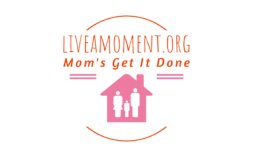When we think of legacy, we often imagine the values we pass down, the memories we leave behind, or the tangible contributions we make during our lives. But there is another, quieter form of legacy, one that continues to benefit the world long after we’re gone. Whole-body donation is a selfless, often overlooked gift that fuels medical breakthroughs, enhances surgical training, and saves lives through research and education.
This act of generosity offers far more than scientific insight; it equips healthcare professionals with the tools and knowledge they need to care for future patients. In this article, we explore how whole-body donation impacts medicine and public health and why more people are considering this powerful end-of-life choice.
The Role of Whole-Body Donation in Medical Education
One of the most immediate and profound uses of whole-body donations is in anatomical education. Medical students around the world learn the fundamentals of human anatomy by studying donated bodies. These firsthand experiences provide insights that textbooks, models, or digital simulations simply cannot match.
For many aspiring doctors, a cadaver is their first real patient. Through meticulous dissection, students learn the intricacies of muscles, nerves, blood vessels, and organs. They see how anatomy varies from person to person, how diseases manifest in different tissues, and how complex the human body truly is.
This training instills a deep respect for the human form and prepares students for the real-world clinical settings they will one day enter. As many medical school faculty members put it, donors are “silent teachers”—individuals who continue educating long after their life has ended.
Advancing Surgical Techniques Through Realistic Practice
Beyond foundational anatomy, surgeons-in-training and even seasoned specialists use donated bodies to develop and refine new surgical techniques. Unlike animal models or synthetic materials, human tissues provide the most realistic context for practicing complex procedures.

Whole-body donation has been instrumental in:
- Teaching minimally invasive surgeries, such as laparoscopic and robotic-assisted procedures
- Testing and improving orthopedic implants and joint replacements
- Refining cardiothoracic and neurosurgical techniques
- Training trauma teams in emergency response simulations
For example, new methods for spinal fusion or heart valve repair are often tested on donated bodies before they are ever attempted in living patients. These hands-on experiences dramatically increase the safety and effectiveness of real surgeries.
In this way, donors are active contributors to medical innovation—giving doctors the chance to perfect life-saving procedures in a no-risk environment.
Supporting Research and the Development of Treatments
Whole-body donation also plays a vital role in scientific and pharmaceutical research. Researchers studying diseases like cancer, Alzheimer’s, or autoimmune conditions rely on human tissue to observe how these illnesses progress and affect various systems.
Donated bodies allow scientists to:
- Examine the effects of aging on organs and tissues
- Study rare conditions that are difficult to research otherwise
- Develop and test new medical devices or diagnostic tools
- Validate radiological or imaging technologies using real anatomy
In some cases, donated tissue is used in groundbreaking studies that help develop new treatments or improve existing ones. For instance, research into degenerative eye diseases has benefited immensely from donated ocular tissue, while brain donations have contributed to major advances in understanding dementia.
Without these real-world resources, much of today’s medical progress would be slower, less accurate, or entirely out of reach.
Donors as Heroes of Medical Progress
It’s important to recognize that whole-body donation is not an abstract scientific resource—it’s a gift given by people who believe in service, education, and the future of healthcare. Each donor brings with them a unique medical history, anatomical variation, and life story. These individual characteristics help doctors and scientists understand how medical conditions manifest differently from one person to another, and how treatments can be personalized.

Families of donors often take comfort in knowing that their loved one’s final act was one of profound generosity. In many cases, donation provides a sense of meaning and purpose at the end of life—an opportunity to give back in a way that continues to ripple through generations.
Some institutions even hold annual memorial ceremonies or publish letters of appreciation, honoring the donors who made their work possible. For many students and physicians, the memory of their first experience with a donor remains one of the most moving and humbling moments of their careers.
Breaking Down Barriers and Misconceptions
Despite its value, whole-body donation remains underutilized in part due to misconceptions about who can donate and how the process works. Many people assume that age, illness, or prior medical history automatically disqualify them—but in truth, eligibility is broad and evaluated at the time of death.
Others worry that their family won’t be able to hold a proper memorial, but most donation programs offer respectful handling, cremation, and the return of remains—allowing families to honor their loved one in the way they choose. In addition, some states provide free or reduced-cost cremation for the families of full-body donors. Prospective donors can research free cremation Florida, Nevada, Utah, and Arizona to support their advance directives.
Education is key. When individuals and families understand the impact of whole-body donation, they are more likely to view it not just as a medical contribution, but as an act of humanity.
A Legacy That Lives On
Whole-body donation is one of the most extraordinary gifts a person can give. It fuels the education of doctors, advances scientific research, and drives innovation in medical care. From the operating room to the research lab, the impact of each donor is felt in real and lasting ways. By choosing whole-body donation, individuals leave behind a legacy of learning, healing, and hope—one that continues to save and improve lives long after they’re gone. It is, quite literally, a gift beyond life.


